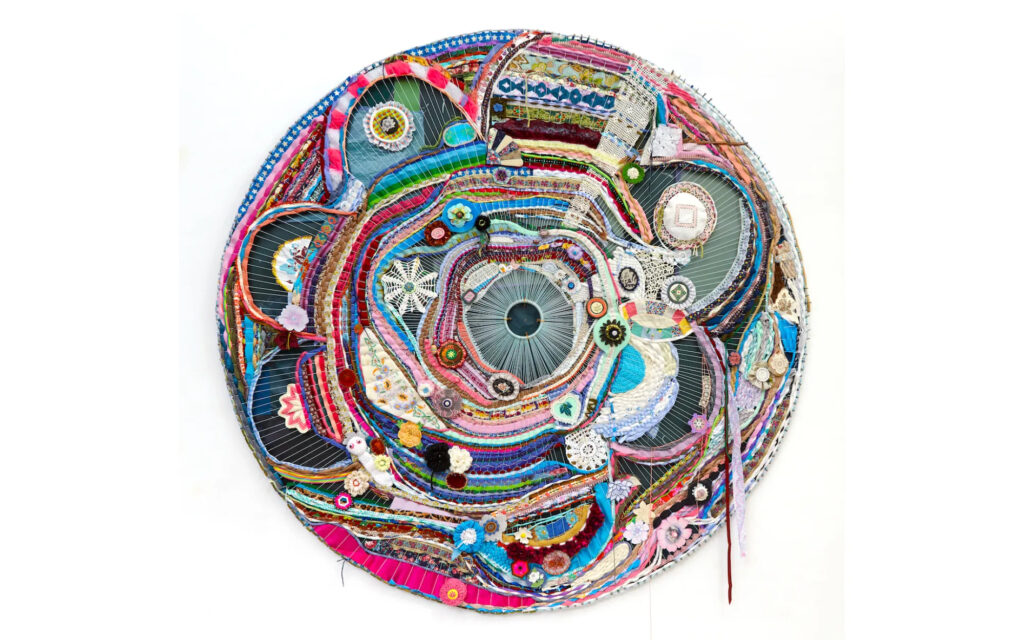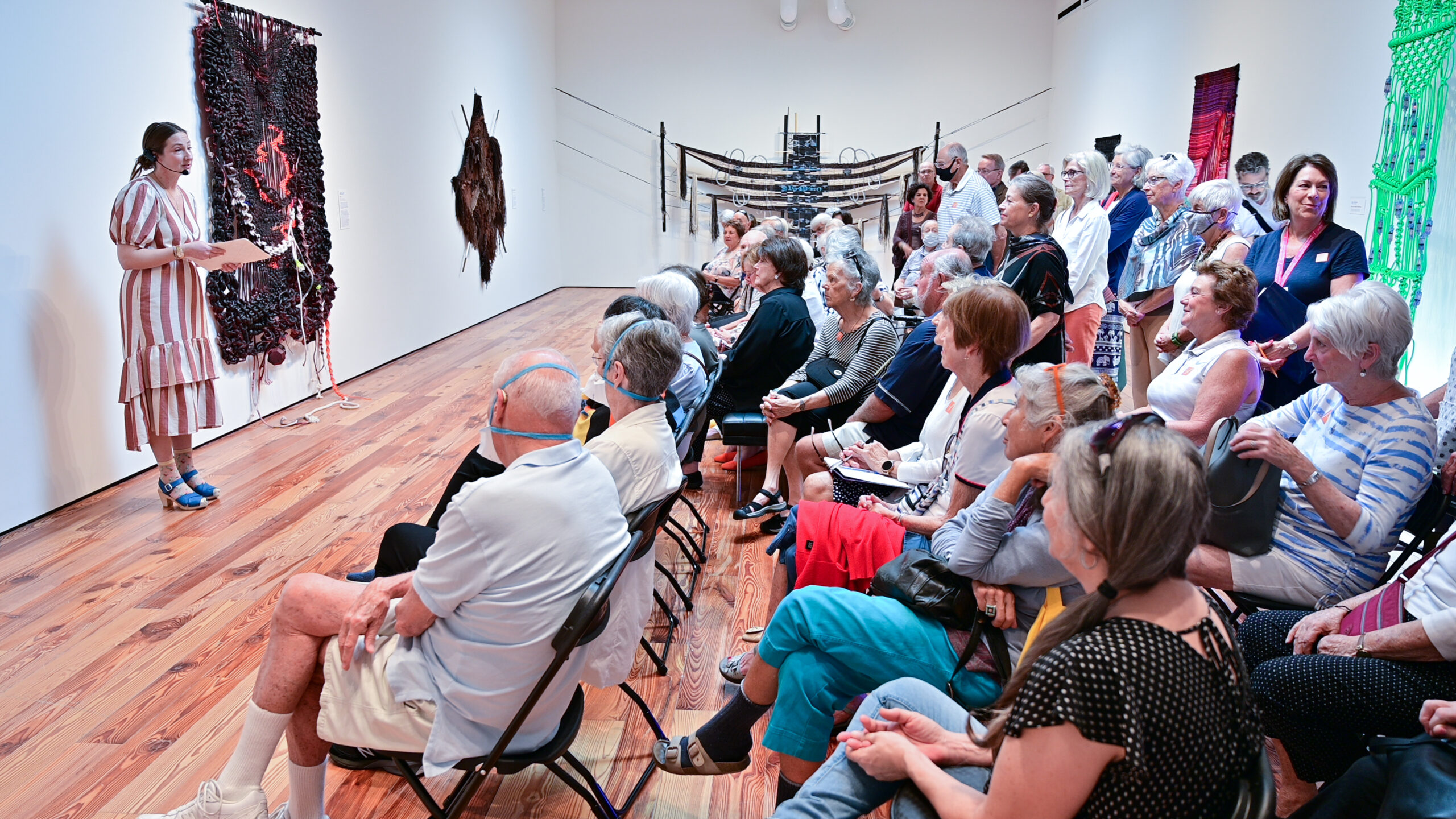On Saturday, Feb. 25, Curator of Exhibitions and Programs at Bedford Gallery in the Lesher Center for the Arts Emilee Enders led a packed gallery full of eager museum goers through the exhibition A Beautiful Mess: Weavers & Knotters of the Vanguard.
The show, currently on view at Sarasota Art Museum of Ringling College of Art and Design, features the work of 11 female artists all working in the field of textile art. The works in the exhibition push the boundaries of fiber art, a genre and medium often relegated to the world of craft, by investing them with conceptual meaning from the personal to the political. As she led visitors through the galleries, Enders shared narratives and formal readings of each of the works, offering the artists’ biographies and information about their processes.

Packed into a standing-room-only gallery, the curator’s tour started with an introduction to a series of works that function as a microcosm of the conceptual themes for the exhibition as a whole. Two works by Kirsten Hassenfeld present eco and environmental concerns in a whimsical way — upcycled materials collected from second hand shops and the like are woven into large circular mixed-media textile works. Surprising objects like a sock puppet and a decorative pin cushion from yesteryear are hidden throughout. The title of one of the two works, Millefleur, makes reference to the middle-ages European composition practice of covering the background of a tapestry in small flowers. Hassenfeld’s work weaves mix-matched flowers and flower-esque found textile objects throughout the plane, in a playful homage to the tradition.
Visually dominating the far end of the gallery, two works by Kira Dominguez Hultgren combine a research-based practice with a process-based practice to produce a weaving explosion. A massive sculptural weaving with a bird-like shape spreads across the shorter wall of the room. Some aspects of the weaving are familiar to Navajo weaving techniques, but the general structure has been deconstructed and transformed into a wall hanging that reaches its tendrils from its expected square borders. The title of the work, Across_1, illuminates the research and storytelling aspects of Dominguez Hultrgren’s practice, dropping crumbs for the reader to untangle her narrative. A blue code is stamped across the center of the weaving — like a code stamped on a crate in a large storage system. The code belongs to a weaving in the Smithsonian collection, Loom with Textile, by the weaver Juanita Paltito (Navajo name: Asdzáá Tl’ógí), that was acquired in 1975. While in the Smithsonian’s care, the work was separated from its ascension number and essentially mishandled and lost in plain sight, a bureaucratic metaphor for the treatment of Native American people.
Glimmering on the adjacent wall, two weavings by dani lopez bring together glittery, vinyl, and leather materials in a glitzy visual reference to drag queens and queer culture; across from that, a large weaving by Jacqueline Surdell resembles camouflage netting used by militaries, and securing exercise materials — like a barbell; and nearing the entrance to the next gallery, two weavings of extension cords by Dana Hemenway light up the gallery as brightly colored-plasticky and tactile sculptures.
Admission to the Sarasota Art Museum is free for Ringling College students, faculty, and staff. As a kunsthalle, or non-collecting museum, it provides an endless rotation of exhibitions. It is the first museum dedicated to contemporary art in the region and it is a resource for learning about global art discourse. The Museum is often called a teaching museum and living laboratory for contemporary art at the College. They offer talks, tours, and programming that support students and the community of Sarasota. Students and visitors can also spend an afternoon doing research in the Murray Bring and Kay Delaney Museum Conservatory, a small collection of art books and resources, free with admission to the museum. A Beautiful Mess: Weavers & Knotters of the Vanguard is on view at Sarasota Art Museum until June 25.



